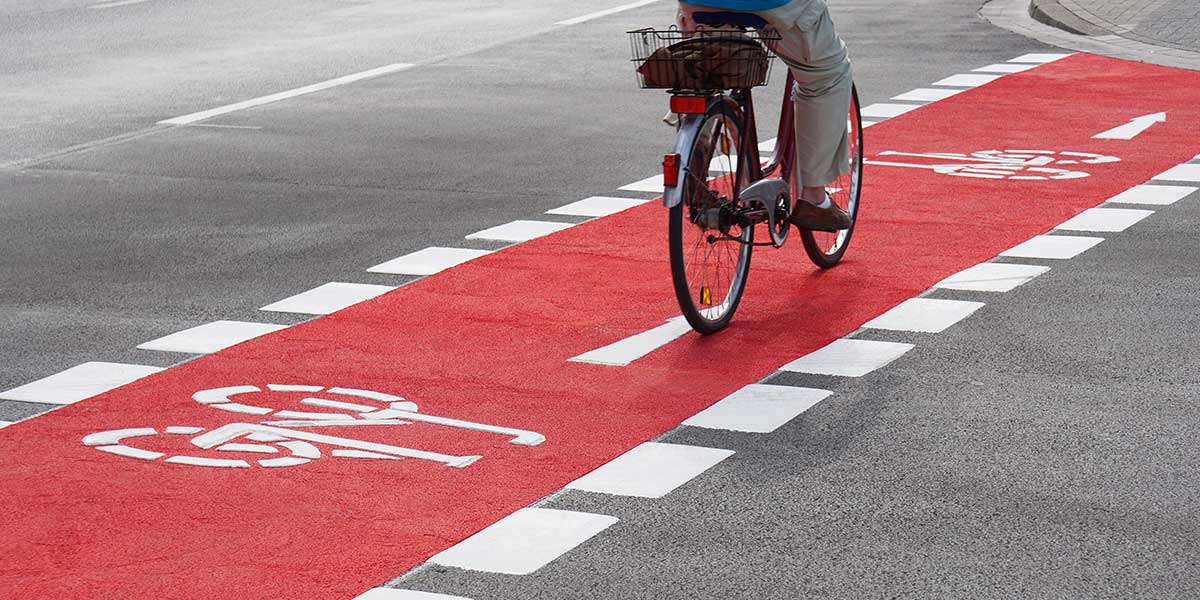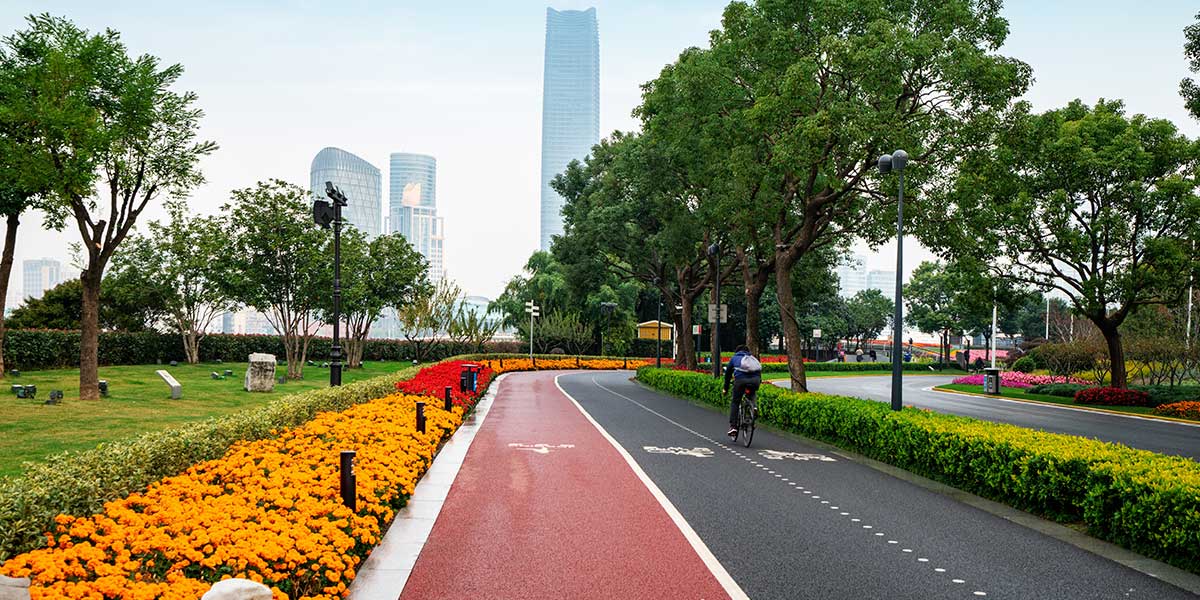A special colored acrylic polymer paint known as asphalt paint is becoming more common in many cities. The acrylic bike lane, which is usually installed parallel to the road or on special bike trails, is a crucial area for bikes. The acrylic-painted bike lane separates pedestrian and vehicle traffic from bike traffic, allowing cyclists to drive safely.
What is Bike Lane Paint?
Bike lane paint refers to the specially formulated paint used to mark bicycle lanes on roads and streets. It is typically made of a durable, weather-resistant material that can withstand heavy traffic and other environmental factors. The paint is applied to the roadway surface to create a visible, designated space for bicyclists to ride, separated from other vehicular traffic.
Green bike lane material can come in different colors, although the most commonly used color is bright green. This helps to differentiate the bike lane from other parts of the road and makes it easier for cyclists to see and navigate. In addition to marking the bike lane itself, the paint may also be used to mark other features such as bike boxes, shared lane markings (also known as “sharrows”), and other signage that helps to guide bicyclists safely through traffic.
Overall, acrylic asphalt paint is an important tool for creating safer and more accessible streets for cyclists and plays a key role in many cities’ efforts to encourage more people to choose biking as a transportation option.
How to Do a Bike Lane Paint?
Some steps are followed to do a bike lane paints:
- Preliminary preparation: To ensure adherence of acrylic bike paint to an existing floor, it should be cleaned with pressured water to avoid dust and dirt on the surface.
- Two-component asphalt paint: The bike lane paint is made by using water-based acrylic polymer paint which is produced for exterior use. One of the essential features of the bike lane is that it is designed to prevent the bike wheels from slipping. For this reason, it is intended as a dual component. The second component is a special hardener containing silica. After mixing the acrylic polymer and silica-containing hardener for 2-3 minutes, it is sprayed on the floor using a compressor and pump. Then, with the special brush, it is applied to the floor neatly. Acrylic asphalt paint should be applied in at least two layers. The floor should preferably be asphalt or concrete.
What Is the Cost of Bike Lane Paint?
Bike lane paint cost can vary depending on a number of factors, including the quality of the paint, the size of the project, and the location of the road or street where the paint is being applied. In general, however, the cost of bike lane paint is relatively low compared to other transportation infrastructure projects. The cost can vary depending on the complexity of the project, such as whether it involves multiple colors or special treatments like thermoplastics or reflective materials.
It’s worth noting that the cost of bike lane paint is just one part of the overall cost of building and maintaining bike infrastructure. Other costs may include designing and engineering the project, installing signs and other wayfinding elements, and ongoing maintenance and upkeep.
Bike Lane Paint Services by Avind
If you also want to get high-quality green bike lane paint made with good for sale, you may get support from Avind, one of the best asphalt paint manufacturers. Not only will you be able to use the products for a long time, but you’ll also save money. As a result, you are welcome to contact us or visit our website. If you want, you can fill out the related form and make a request. Our hardworking team and experts will get back to you as soon as possible and forward your requests to us. If you wish you may also ask us any question that comes to your mind about the asphalt painting process, green bike lane specifications, and the green bike lane paint cost.


